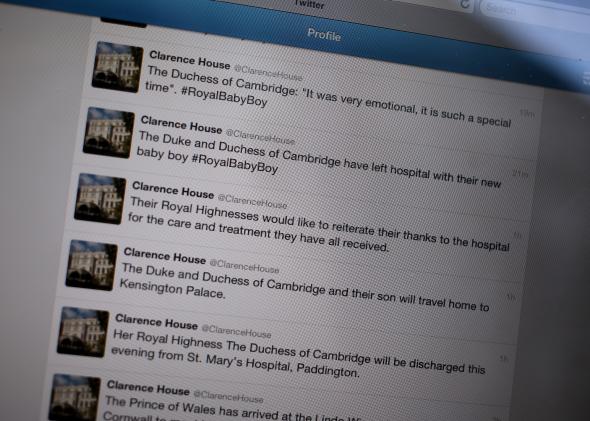Twitter Just Solved Its Biggest Problem: Words

Photo by Matt Cardy/Getty Images
Words. They have their uses. When you're trying to communicate something, but for some reason you don't have the relevant photos or videos handy, words can be just the ticket. Certainly they represented a marked improvement over grunts and roars when they were first introduced. They've had a good run.
But let's face it: Words are old hat. They're suboptimal from a UX perspective, because they're aesthetically monotonous, and their meaning is not always easily grasped at first glance. They demand of the user a form of engagement—"reading"—that can be mentally daunting. Some people can't do it at all. And even those who can are likely to find their attention straying if confronted with too many words at once. After a while, if they're not careful, the words all sort of run together and the eye begins to yearn for something more instantly gratifying upon which to alight.
Be honest: You've already skipped on down to the pictures below these words, haven't you? And if you haven't, you're sorely tempted to do so at this very moment.
Instagram gets it. Pinterest gets it. Snapchat and Tumblr get it. Even Facebook sort of gets it.
And, as of today, Twitter gets it too—finally. The last of the text-centric social networks, Twitter until approximately 4 p.m. eastern time on Tuesday, Oct. 29, 2013, stood as a vestigial bastion of logophilia on the social Web, clinging to 140-character text strings as its base unit of sharing. You could link to pictures and videos in tweets, but they remained subordinate to the words, concealed behind a link or a "view photo" button. No longer. In an update rolled out quietly, almost apologetically, Twitter this afternoon began displaying pictures and Vine videos directly in tweets in users' timelines. Now the words are subordinate: The images are far larger than text-based tweets,
I could use more words to describe this change, but why waste your time when I can show you instead?
The innovation has of course dismayed a smattering of loyal Twitter power-users. That's to be expected. But as Twitter reviews its balance sheet in preparation for going public, it surely can't help but notice that it possesses a surplus of loyal power-users and a deficit of casual visitors. That deficit is what has prevented the site from approaching Facebook-level ubiquity, not to mention Facebook-level riches. And it's all words' fault.
Join me, then, in cheering the dawn of a new Twitter—a Twitter in which words are relegated to their rightful role as captions. It's a Twitter for the latter 90 percent of the 21st Century, and for the lazier 90 percent of society. Or, perhaps more accurately, for the 90 percent of society that's willing to own up to its laziness.
Or, perhaps more accurately still, for the people who account for nearly 90 percent of Twitter's revenue:
Oh, hey. Twitter just launched display ads. pic.twitter.com/f4WzsDo0Gy
-- Justin VanSlembrouck (@jvanslem) October 29, 2013
Future Tense is a partnership of Slate, New America, and Arizona State University.

